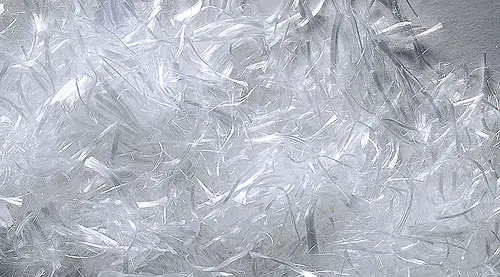Fiberglass reinforced concrete also known as GFRC, is a concrete mixture that has high strength fiber glass in the mix. This provides a ultra strong and somewhat flexible concrete that also protects the concrete from environmental damage over the years. It is lightweight and durable and can be cast into many different shapes. The mix consists of Portland cement, fine aggregate, glass fiber reinforcement, additives, acrylic co-polymer and water. You can also check the article on reinforced cement concrete here.

Advantages of Fiberglass Reinforced Concrete
- It is a great material for restoration of old buildings and is used for the exterior of the buildings. It is also being used extensively for walls and ceilings. Landscape artists have come on board and discovered the versatility of GFRC.
- GFRC is lightweight and is about 75% lighter than traditional concrete.
- The flexural strength gives it a high strength to weight ratio.
- The reinforcement for this concrete is internal and does not need additional reinforcements.
- Heavy duty or expensive equipment is not necessary when pouring or spraying GFRC.
- It is easy to cut and is very difficult to crack.
- GFRC is very adaptable in that it can be poured or sprayed.
- When sprayed, the surface finish has no pits or bug-holes. If it is poured, it is easily shimmied to remove all pits and bug-holes prior to hardening.
Disadvantages of Fiberglass Reinforced Concrete
- There is no ductility. Ductility is a solid material’s ability to deform under stress.
- The cost of GFRC is higher than traditional concrete. Due to the fiberglass being inside the concrete and the addition of additives and acrylic co-polymer the price is steeper.
- GFRC is difficult to self-mix. Generally, a contractor will mix and pour or spray this type of concrete.
- While the mix can be pretty versatile it can fall apart if not properly applied or poured. The use of materials such as wire along the foundations, walls and ceilings will help the concrete adhere and have a stronger finish.
Uses of Fiberglass Reinforced Concrete
While GFRC is excellent for new building exteriors and restoration projects of the facades of old buildings, it is also being used out of the box. It is also being used to construct walls and ceilings within buildings. GFRC is being used extensively in landscaping and water features. Due to its ability to be poured in almost any cast, it is excellent for sculptures as well as prefabricated rocks and boulders. Landscape artists are using this material for one-piece waterfalls, landscape sculptures, boulders, cremation urns and memorial stones.
So, while fiberglass reinforced concrete is still relatively new and its uses have not been fully developed, it is becoming a popular choice for contractors and landscapers. Its durability and lightweight design enables it to be used in many different situations.
